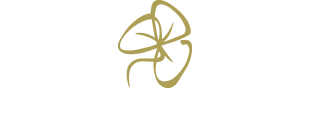Innovation and technology help producers farm better
Winetech and Vinpro once again joined hands with wine grape producers, cellar representatives, viticulturists, and other interest groups in the wine industry during their recent information days. The latest research and innovation in viticulture were shared in the Olifants River, Paarl and Swartland, Worcester, Robertson and Breedekloof regions.
“It is important for us to continuously exchange knowledge in the industry so that we can continue to apply world standards in vineyard management, thereby ensuring a more sustainable and responsible industry,” says Conrad Schutte, consultation service manager at Vinpro. “We are grateful to Winetech for making these days possible.”
Soil health, new techniques, and innovative mealybug control
Soil health is extremely important, says Gert Engelbrecht, Vinpro viticultural consultant in the Olifants River region. Gert gave feedback on a carbon farming congress hosted by Stellenbosch University. “Minimum cultivation, living healthy roots, ground cover, crop rotation and integration of livestock are important. An important aspect of WISE farming is to stop the wrong practices that harm soil health. Use existing beneficial winter weeds as cover crops if possible. Wild barley and creeping saltbush work well.”
A cincturing trial by Johannes Mellet from Klawer Cellars produced good results and producers were encouraged to apply this technique. According to Johannes, the vine is cinctured, and the roots are completely cut off from the floor network. No nutrition is therefore received from the leaves for a period of 12 months. The vine dies by itself up to the root tip. This shortens the fallow period before replanting can begin. This is also an effective way to prevent the re-establishment of virus diseases such as leaf roll and fanleaf.
Brahm Jonker introduced FieldBugs’ arsenal of organisms used for mealybug control. Some of the organisms prey on mealybug and others are parasites that lay their eggs inside the female mealybug. Times of application and organism selection factors were also discussed. According to Brahm, these organisms are already being used with great success in the industry.
Certain core principles for the application of fertiliser were emphasised by Charus du Plessis of Atlantic Fertilisers. “The application of organic fertiliser improves the uptake of chemical fertilisers. When it comes to applying fertiliser, it’s important to take advantage of the entire growing season. Timing is extremely important and soil preparation with the right lime and gypsum applications must be done correctly and in advance. Irrigation is important to manage the water, as well as oxygen levels in the soil.”
Elleunorah, grapevine bud mite and erineum mite
According to Hanno van Schalkwyk, Vinpro viticultural consultant in the Paarl and Swartland region, the latest research found that the respective mites are morphologically identical but differ genetically.
“So, it is still not possible to identify the different types within the winter bud. Bud mites feed inside the winter bud and cause damage to shoots and bunches. The best strategy for this is to collect 16 winter shoots with at least six lower buds in winter and have them analysed at the Agriculture Research Council Laboratory. After budding, the mites migrate to the new buds and spraying must be done carefully according to the contact killers’ labels. With severe infestation (more than 50% of the buds) treatment will be necessary for at least two to three seasons. Sulphur in the spray programme suppresses the erineum mite that causes leaf gall. There are also contact killers that must be sprayed at the first appearance of blisters at the bottom of the leaves.”
To measure is to know
According to Hanno, irrigation scheduling is a powerful tool to regulate crop load and quality.
However, it can only be used in conjunction with measurements. “Many producers have groundwater meters, but the refill lines are often not set up correctly. Measuring the stem water potential with a pressure bomb and using the specific norms of water tension is an excellent way to determine refill lines,” he says. “Farm dams, which depend on run-off water, are not full this year and the most important times for good water supply to the vine are flowering time, pea berry stage and véraison. When irrigating, the full root zone must be wetted. Dig holes to check the root depth.”
E-learning makes it easy
For the first time ever, vineyard workers can sharpen their skills online thanks to an e-learning platform for the wine industry. Winetech Learning and Development, the industry body concerned with rolling out the wine industry’s strategy on people development, established this online platform with the aim of offering quality training to people from across the wine industry value chain in a simple and accessible format. Vinpro's vineyard worker training was the very first to be integrated into the platform. “A teach-the-learner principle is followed by which a person from the farm/institution receives training to aid his/her colleagues’ online learning experience,” says Kachné Ross, manager at Winetech Learning and Development.
Farm smarter, not more expensive
“Focus on measurements and the basics to increase effectiveness,” says Trix Quixley from Nexus. “This way, spray effectiveness can be monitored by placing water-sensitive strips inside the vine to determine spray coverage.” According to Trix, spray equipment can be calibrated accordingly. “It is cheaper to spray pre-emptively against powdery mildew and downy mildew – early spraying against powdery mildew is especially important. Good foliage management will also increase the effectiveness of sprays. Use disease prediction programmes to determine the type of downy mildew agent. Downy mildew needs free water to germinate, and its appearance has a lot to do with prevailing weather conditions.
The tasting room is the heart of a wine business
Marisah Nieuwoudt, Vinpro tourism manager, emphasised that the tasting room offers an opportunity for wineries to welcome and nurture visitors. “It's the heart of every wine business,” she says. “A total of 36% of visitors visit cellars because of a previous positive experience. Realise the long-term value of tourists and visitors to your tasting room. Work hard on these relationships.”
Eskom, what to do?
Ruan Gerber from Breërivier Irrigation discussed alternatives for loadshedding at farm level. According to him, it is important that existing irrigation systems function as effectively as possible – this by itself brings savings. “Talk to your irrigation consultant about alternatives for savings and loadshedding relief for your farm. That way you get advice that is tailored to your requirements.”
Jan Nortjé, the brain behind NOVAP underground irrigation, emphasised that this system has no losses to the evaporation of water. “The NOVAP underground irrigation system offers up to 50% savings of irrigation water. There are several advantages to underground irrigation.”
Use technology to your advantage
A total of 5 million tonnes of agrochemical formulations are sprayed annually in crop cultivation against pests. According to Marius Ras from Ras Consult, until recently there was still little knowledge about the effectiveness of these formulations due to uncertainty as to whether they reached the primary target surfaces. "New dropsite technology has changed everything. Now producers can measure and know what the formulation’s deposition will be. The technology is available, affordable, and easy to use.”
For more information or to get in touch with Vinpro, visit vinpro.co.za
Opening Hours
Monday - Friday: 08h00 - 17h00Saturday & Public Holidays: 09h00 - 13h00
Sunday & Religious Holidays: Closed
24 Dec: 08h00 - 12h00
31 Dec: 08h00- 12h00
Closed 25 -26 Dec & 1 Jan
Birdfield Farm, N7 P.O. Box 8 , Klawer, 8145, South Africa





